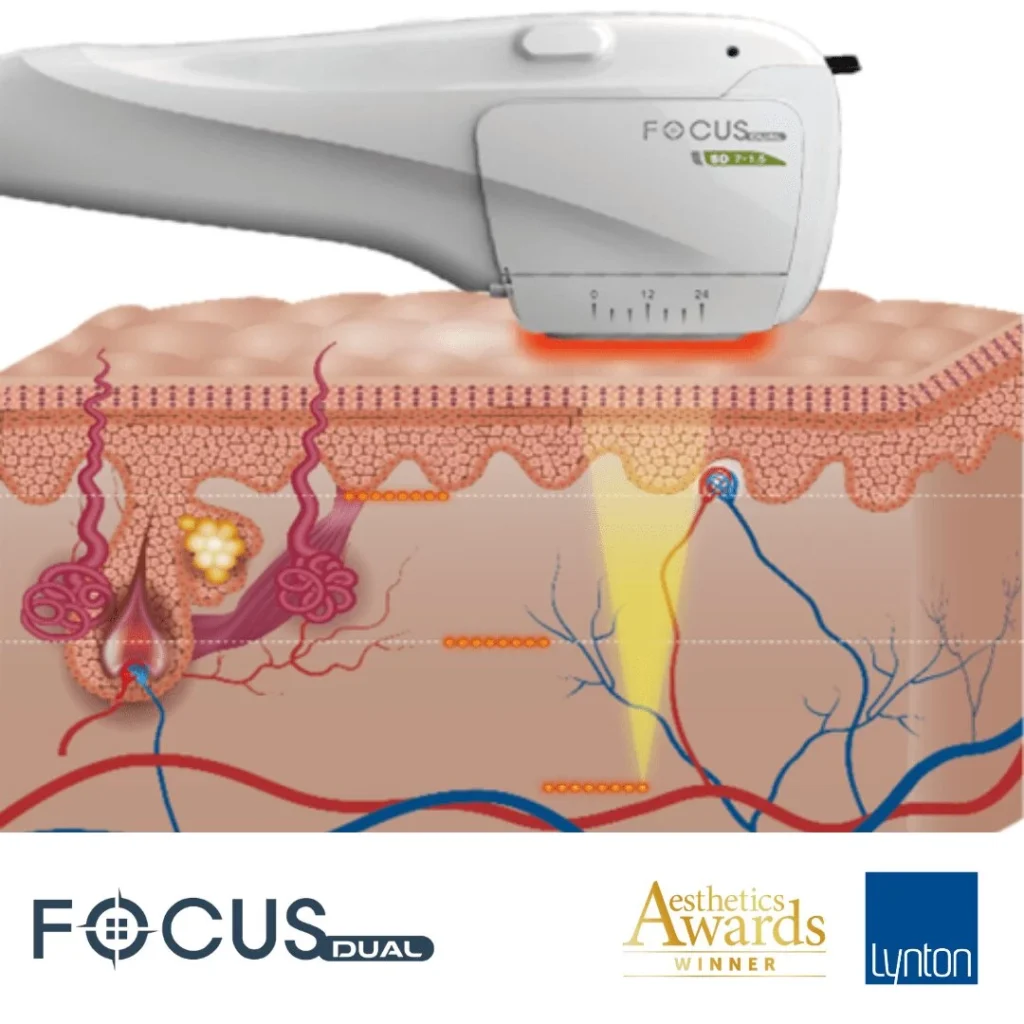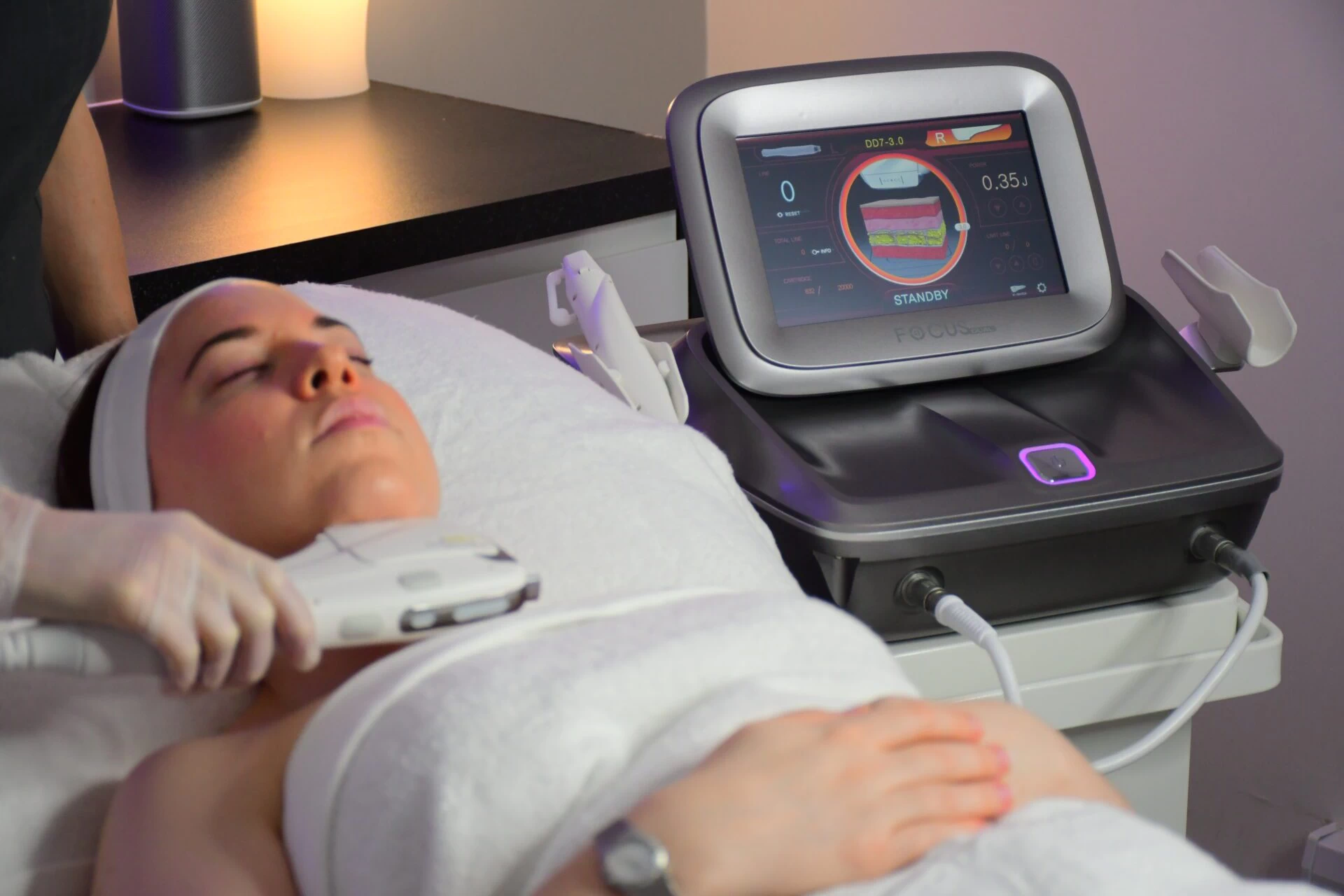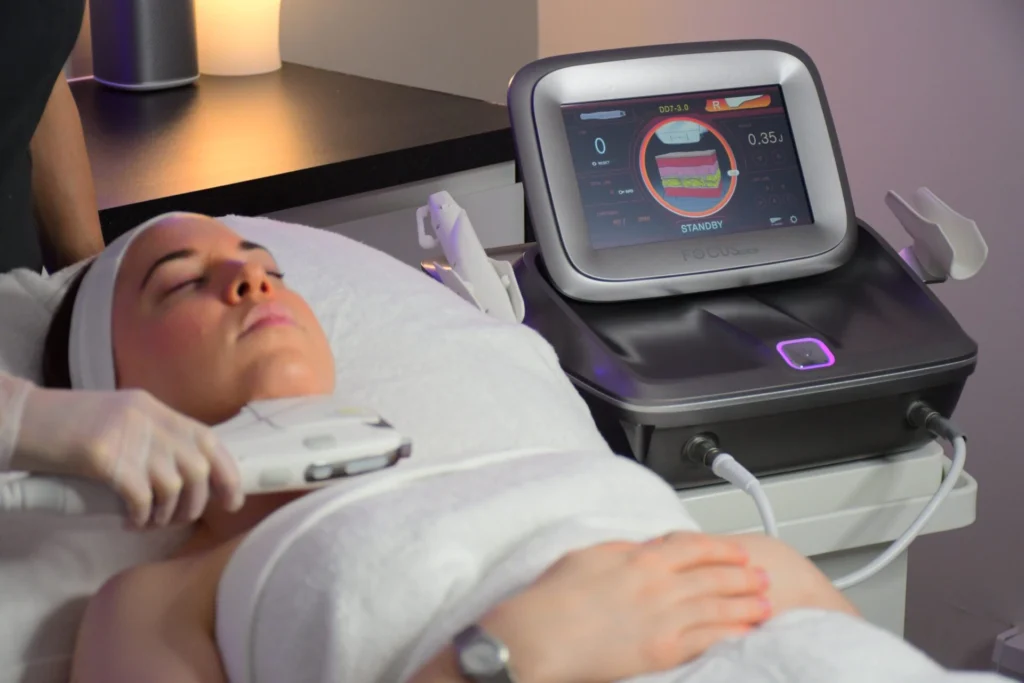HIFU Risks & Side effects
If you are interested in a HIFU Facial or are already having the treatment, it is important to learn about HIFU risks and side effects. Today, I want to share all the questions I have received from people like you so that you can better understand HIFU treatments.
As well as great technologies and outcomes, I have noticed some fear and concerns about the treatment. If you are treated correctly by a trained practitioner, the risks of severe side effects are minimal. Always ensure your practitioner has been professionally trained. Any treatment that can deliver visible results is often from a powerful device.
If treatments are not conducted correctly, unexpected side effects are possible.
As a practitioner who knows how wonderful HIFU is, I would like to answer your concerns.
What is HIFU?
HIFU, High Intensity Focused Ultrasound is an excellent non-surgical treatment to lift, firm and tighten the skin. It is extremely popular because no other technologies can stimulate every layer of the skin, including the SMAS layer, and it virtually has no downtime. The minimal risk of side effects is another reason it is so popular. Compared to other tightening treatments or surgery, the cost is also affordable.
The HIFU is a non-surgical face lift using focused ultrasound. During a HIFU treatment, various cartridges are used to focus the ultrasound at different skin depths. The focused energy generates heat which tightens the SMAS layer and promotes collagen production in the Dermis layer to give a natural lifting appearance.

Can HIFU Treatment Go Wrong
Does HIFU Risk facial paralysis?
If you don’t understand the anatomy & physiology of facial nerves and apply unnecessary power, temporary facial paralysis can occur. It is extremely rare to hit those nerves if your practitioner has received proper training.
Does HIFU Risk loss of facial volume on the cheeks?
HIFU is an FDA-approved non-invasive technology for facelift and fat reduction. Three cartridges can be used for a HIFU facial. These target 1.5mm, 3mm and 4.5 mm skin depth. If a treatment is done at the wrong depth and targets fat, a volume reduction may occur. Proper training dramatically reduces this risk.
Can HIFU make Age spots worse?
HIFU uses focused ultrasound and is not a light-based treatment. Melanin does not absorb ultrasound, so any colouration in the skin, like age spots, will not be affected.
If I stop having regular HIFU, will my face sagginess worsen?
Stopping HIFU treatments will not make your skin worse than before you started; you can stop at any time. Of course, any gains you make from your treatments will naturally reduce over time.
How does it feel during treatment?
We cleanse your skin first, then apply ultrasound gel to cool your skin and increase energy conductivity. The HIFU handpiece is placed on the skin and held in one area at a time. You will feel a prickling, tingling, and warm sensation whilst the energy penetrates the skin. You may feel some level of discomfort, but it is tolerable. I will check how you feel throughout the procedure to ensure you are as comfortable as possible.
Is HIFU painful?
Traditional HIFU can be very painful, and most people will need numbing cream or an injection to manage the pain. However, we use the latest “Safety Assist Transducer (SAT) Technology” to make your treatment more comfortable. SAT technology has a small hole in the middle of the transducer, allowing the targeting of an accurate depth without causing excessive heat and discomfort.
Is it prevention to have HIFU in your 20s or a bad idea?
It is up to your skin laxity. Some young people could show looseness of the skin earlier than other people. You could apply HIFU at a low power for prevention for those people, but in general, lack of skin elasticity is not the leading cause of skin issues for people in their 20s. Personally, I don’t think it is necessary, particularly in your early 20s.
Which is better? HIFU or Dermal Filler injection?
HIFU and Dermal Filler injection have different purposes.
HIFU tightens loose skin and stimulates collagen production, while Dermal Filler replaces lost volume to plump up the skin. It is good to use both HIFU and Dermal Fillers to achieve the best result.
For example, adding volume with Dermal Fillers in the upper cheek pulls up the lower face. Then treating the lower face with HIFU will stimulate the formation of collagen to lift, firm and tighten the skin.
HIFU doesn’t work if you are too old
There are limitations to what non-surgical devices can achieve, but many mature people are perfectly suitable for HIFU. You can’t judge if the treatment is suitable or not by your age. Some young people may show early signs of skin sagging and vice versa. We lose collagen production as we age. On average, we lose about 40% collagen by age 65.
Can I have HIFU while having a Thread Lift?
HIFU penetrates the deep layers of the skin. If you have a Thread Lift, you must wait six months to have HIFU. Thread Lift can also affect other treatments, such as Laser and Radio Frequency. If you plan to have a Thread Lift, you must be aware of these issues.
Can Botox/ Dermal Filler be affected by HIFU?
If you have Botox or Dermal Filler, you need to wait for four weeks to have HIFU as the HIFU energy may heat and affect the Botox in your skin.
I have Microblading on my eyebrows. Can I still have HIFU?
If you have microblading or any other cosmetic semi-permanent make-up, we must avoid the area but can still treat other facial areas.
Does HIFU Risk damage my skin?
HIFU is a safe treatment because the ultrasound energy targets only the skin's upper dermal, lower dermal and SMAS layers. It does not cause any damage to the Epidermal area (top layer of the skin).
Are there any medical conditions that prevent HIFU?
Some medical conditions prevent you from having HIFU. Some of the main conditions are people with pacemakers, Epilepsy, Facial paralysis, Lupus, Kidney disorders, Cancer, and Anti-Coagulant medication users.
How long does it take to see results?
Some people may see an immediate lifting effect immediately after the treatment. However, the ultimate results are natural and will show gradually over the following 2 to 3 months. During this time, older collagen structures will be replaced with new, strong collagen.
How often and how many sessions will I need?
Maintenance sessions are necessary, like any other anti-ageing treatment. We recommend HIFU every 9-18 months after the first course, which is between 1-3 treatments, depending on the individual.
Is there any downtime?
Our Focus Dual HIFU machine has virtually no downtime. You may experience slight redness and swelling following the treatment, but these symptoms should subside quickly. I will give you general aftercare advice, and you can return to your normal activities immediately.
How to prepare for a HIFU treatment?
The most important thing to prepare for HIFU is to avoid sun exposure and sunbeds. Also, if you are taking topical Retinoids/Steroids in the treatment area, you must stop using them for at least two weeks before treatment.
What do I have to do if I want to book an appointment?
Before your treatment, you need to book a free virtual consultation. During your virtual consultation, I will show you slides to explain the HIFU procedure and answer any questions you may have. I will also send you a digital consultation form to fill out, checking your medical history. Once you are happy with your consultation, we can book your appointment. We recommend you turn up to your appointment with comfortable clothes and minimum or no make-up.
How long does the treatment take?
It depends on your treatment area. For instance, a Full face & Neck will take about 90 minutes.
Aftercare and what to Avoid after HIFU Treatment
It is essential to avoid direct sun exposure and apply SPF50. UV rays cause most of our skin ageing, including sagginess, wrinkles, and pigmentation. UVA also damages the collagen and elastin in the skin. This will compromise and limit the results of HIFU treatment.
Secondly, avoid activities that can increase skin temperature for 48 hours, such as sauna, excessive exercise, and hot baths.
Lastly, avoid exfoliating the skin and active acid-based products for one week.
If you have any questions about aftercare, please contact me.
Anything I can do to improve my skin at home?
Yes, a daily skincare routine makes a massive difference. Even if you have the same HIFU treatment, the results are quite different for people who look after their skin at home compared to people who rely only on salon treatments. I particularly want to talk about sunscreen. I can’t emphasise how important it is to protect your skin from UV rays. This will affect the results of HIFU treatment considerably!
What are UV rays?
There are two types of UV rays we need to be aware of. UVA & UVB.
SPF moisturiser supplies some sun protection, but it doesn’t always contain protection against UVA rays. UVA causes long-term skin ageing, and UVB causes suntan /sunburn. It is essential to apply sunscreen after your daily moisturiser.
Is it ok if I wear sunscreen every day?
As well as using sunscreen, you can protect your skin by wearing a hat and sunglasses to cover your skin. We can’t visibly see UV rays, so it isn't easy to notice a short-term effect. You are likely to regret it when you start seeing the ageing effect on your skin decades later.
We recommend reapplying sunscreen every 2 hours. This is not practical if we wear make-up. That’s why wearing sunscreen with HIGH SPF becomes essential.
I thought sunlight was a reliable source of Vitamin D
That is a good question. Sunlight is the most natural way to get enough vitamin D. To support our health; it is recommended to get 10–20 minutes of midday sunlight daily.
When I do it myself, I let my legs or arms out but always cover my face & neck. I also take Vitamin D supplements every day to top up.
Any other tips?
Did you know some colours absorb UV rays better than others? Darker clothing colours absorb more UV rays than lighter colours. This means the UV rays are less likely to reach your skin. Bright colours such as red can absorb UV rays—the more vivid and darker the colour, the better the skin protection.
That was a lengthy list of questions! I hope I have answered most of your concerns and that you feel more confident about understanding HIFU.
Are you ready for HIFU?
Now that you know all about any HIFU risks and the importance of protecting your skin from UV rays, you are ready to start your skin journey to enhance your beauty! Besides individual HIFU treatment, Setsuko Beauty Clinic also provides “Package Plans.”
Having great skin is like exercising regularly; you need regular treatments over the year to get the best results. We have a range of tailored plans to suit your needs & lifestyle. All Package Plans include HIFU, RF Microneedling and Noon Aesthetics Chemical Peel Facials, followed by a free Skin Review.
You pay an initial deposit followed by a set payment each time you visit. Spread your costs and enjoy a large discount on treatments and skincare products. We will tailor the treatments to suit your specific needs.
Please get in touch with us if you are interested in our excellent beauty package plan or want to book a HIFU treatment. We are always here to listen and help you.




